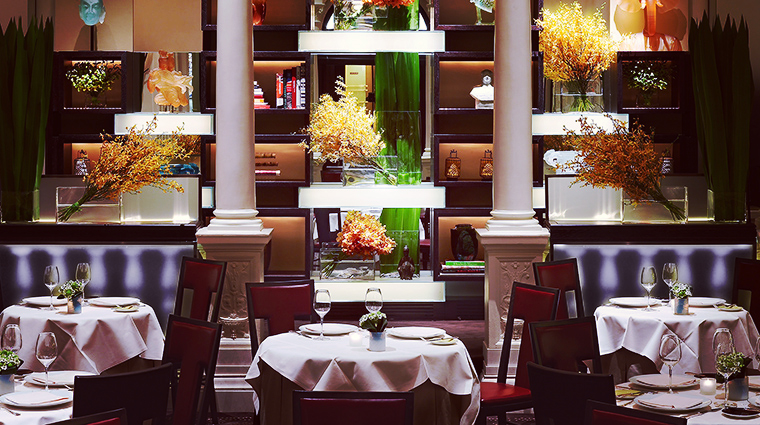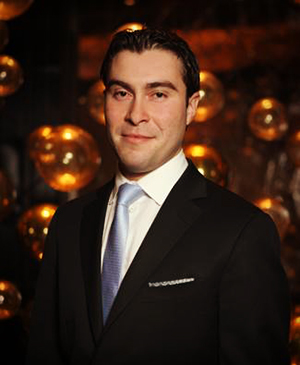
After the “What does it take to make a Five-Star hotel?” question, “How should I dress for a high-end restaurant?” could be the most frequently asked inquiry in the Forbes Travel Guide world. With polished maître d’s, valet services and 10-course meals, it proves a fair query, one that can’t be approached with a universal answer, either. The attire expectations for one fine-dining establishment in San Francisco may not be applicable to a chic spot in Miami. To get a better understanding of what patrons should and shouldn’t do with their wardrobes, we reached out to Karim Guedouar, service director for Forbes Travel Guide Five-Star Daniel.
What’s the biggest misconception people have with their attire for an evening of fine dining?
The biggest misconception, I feel, is what exactly fine-dining attire is. There is no authority on what is and is not fine-dining attire — most people would agree that a jacket is, and blue jeans are not. But what about very high-end, tailored blue jeans worn with a suit jacket? It is very hard to draw a line. I grew up in Monaco and have worked my entire career in fine dining. The “lines” are much more blurred now than they used to be. In past generations, dressing in your finest attire for a fine-dining restaurant was automatic. Our society has changed, and now the mood is more casual than past generations.
You’ve been in the hospitality industry for some time now. What are some of the changes you’ve noticed with dress codes at higher-end restaurants?
I’ve noticed the notion of “proper attire” dissolve quite a bit in high-end restaurants and establishments, like the classic hotel bars. “Proper attire” for a man used to be regarded as a well-put-together suit and tie, for a woman an elegant dress. Now it is not as straightforward. There is much variation, which I believe can be attributed to changing trends and the evolution of fashion. Twenty years ago, Louis Vuitton was not making bright pink and yellow handbags. You didn’t see jeans and sneakers in the vitrines of Chanel and Giorgio Armani. Fashion at large has changed. Now we see many men wearing designer jeans, T-shirts and sneakers.
What are the dress code standards at Daniel? When a diner doesn’t necessarily meet those requirements at the door, how are things handled?
The dress code at Daniel is, for gentlemen, a jacket in the main dining room with a tie encouraged; for ladies, no sneakers, jeans or T-shirt — a little less defined, generally respectful and chic. In the cases where guests are not able to arrive in line with the dress code, we do everything we can to accommodate nonetheless — for men, we offer a tailored jacket that we keep on hand, and we also offer to seat the party in our Lounge area, where jackets are not required. These instances are rare, as we explain the dress code to patrons while making and confirming reservations.
Many of your contemporaries have a “business casual” standard with attire. How exactly would you define that for a male or female guest?
That is a fantastic question and, to be honest, I have never understood what “business casual” entails. I have seen many interpretations of business casual throughout my career, some more business than casual, some more casual than business. If I had to summarize the business-causal look, I would describe it as a perfect balance of the two, like rum-raisin ice cream — the flavors should be equally balanced, where no one is overpowering the other. For instance, a gentleman might wear a dark pair of pants, dress shoes, a white button-down shirt without a tie, and a dark jacket… Personally, I would add a white handkerchief to make the look a bit more chic.
You’ve worked in restaurants in Europe and across the U.S. What are some of the biggest differences you see between the New York City, L.A. or San Francisco scenes?
Yes, I’ve been observing dress code around the world — from Monaco, to Lyon, to San Francisco, to New York City — for some years. Europe is more formal, for sure, adhering to classic styles and traditions. The U.S., in general, is more relaxed when it comes to dress, but surprisingly, I’ve observed similar trends in both San Francisco and NYC — some people dress very classically, others more casually.
I will never forget, in 2008, when I was living in San Francisco and had to go to the market at 5 a.m. to buy flowers for the restaurant where I was working. I went ready for the day, dressed in my suit and tie — you can imagine I was a bit overdressed for the flower market. I was buying orchards from an 80-year-old man, who was looking at me with the biggest smile. Of course, I thought he was making fun of me since I was the only man in a suit, but he said, “It’s so refreshing to see you here because you remind me that in this place in the 1950s, everyone was wearing a suit at the market. Well done, kid.” I felt I was carrying on a time-honored tradition.
What is the most important thing for diners to keep in mind when planning their attire?
It is most important for the guests to be comfortable, both in their attire, and their environment. Simply think about the personality of the establishment and what suit would suit best is all that is needed.


